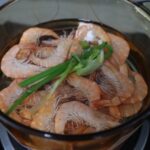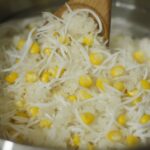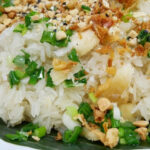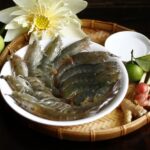What was once thought to be just a type of leaf used for aroma, pandan leaves actually do so much more when added to the pot when boiling shrimp. Not only does it help eliminate the fishy smell, but it also makes the shrimp a beautiful color, with firm, sweet meat, and retains its freshness as if it were from a restaurant.
Add a handful of leaves for a perfect “makeover” of your shrimp dish. Boiled shrimp is a simple dish, but it’s not easy to make it tasty. Many homemakers often encounter situations where the shrimp tastes fishy, looks pale, or falls apart during cooking. A little-known secret: just add a handful of fresh pandan leaves to the pot of water, and you’ll see a completely different dish.
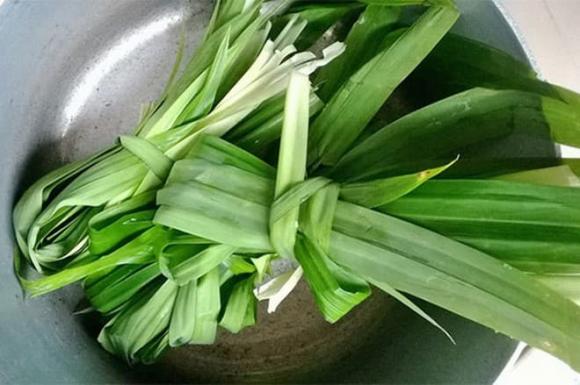
Pandan leaves have a pleasant aroma and contain essential oils that effectively eliminate fishy odors. When combined with high temperatures during boiling, pandan leaves release a gentle fragrance that masks the seafood smell while stimulating the appetite. Notably, pandan leaves can also turn the shrimp shells into an attractive reddish color.
Instructions for boiling shrimp with pandan leaves: Delicious, Beautiful, and Odorless
Ingredients:
- 10 large or medium-sized fresh shrimp
- 2-3 fresh pandan leaves
- ½ teaspoon of salt
- A pinch of sugar (optional)
- Water
Steps:
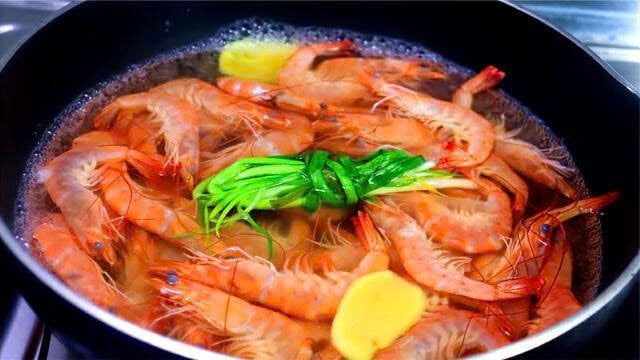
Step 1: Prepare the ingredients. Rinse the shrimp under cold running water; you may cut off the whiskers and heads if you prefer. Wash the pandan leaves and cut them into 5-7 cm long pieces for easier handling.
Step 2: Prepare the boiling water. Fill a pot with just enough water to submerge the shrimp. Add a little salt and a pinch of sugar to enhance the shrimp’s color. Then, put all the pandan leaves into the pot.
Step 3: Boil the shrimp. When the water starts boiling, gently place the shrimp into the pot. Maintain medium heat and boil for about 3-5 minutes, depending on the size of the shrimp. Keep an eye on them, and when they turn reddish, curl up, and their shells start to crack slightly, they’re done.
Step 4: Cool and finish. Once the shrimp are cooked, quickly remove them from the pot and plunge them into a bowl of iced water for 1-2 minutes. This step helps the shrimp retain their firmness and makes peeling the shells easier.
Tips for perfect boiled shrimp:
– Choose fresh shrimp: Fresh shrimp have bright, clear shells, naturally curved bodies, and firmly attached heads. Avoid shrimp with straight bodies or detached heads, as these are signs that they are not fresh.
– Don’t overboil: Shrimp only need to be boiled for 2-3 minutes after the water comes to a rolling boil. Overcooking will make the meat mushy, dry, and less sweet.
– Serve with a twist: Shrimp taste best when accompanied by salted chili lime dip or a sweet and sour fish sauce dip. These condiments enhance the shrimp’s natural sweetness and add a kick to your dish.
– Avoid stirring: Refrain from stirring the pot while boiling to prevent the shrimp shells from cracking and breaking, maintaining their aesthetic appeal.
Why use pandan leaves when boiling shrimp?
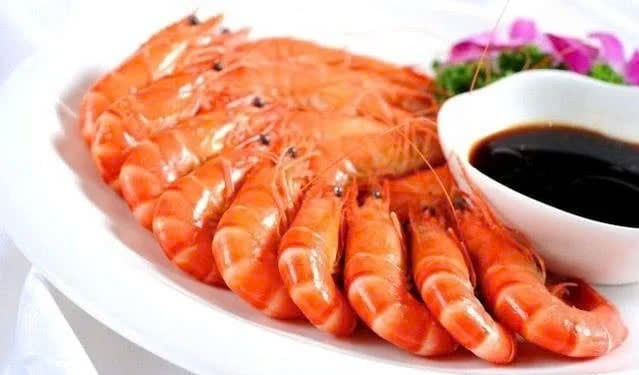
Pandan leaves are commonly found in many parts of rural Vietnam. Besides their natural fragrance, pandan leaves contain antioxidants and essential oils that possess strong deodorizing properties. When used in steaming or boiling seafood, pandan leaves not only tame the distinct fishy odor but also help preserve the food’s freshness.
Additionally, in traditional Vietnamese cuisine, pandan leaves are used to infuse flavor into various cakes, desserts, and sticky rice dishes. When applied to boiled shrimp, pandan leaves offer a dual benefit: enhancing the dish’s appearance and adding a natural flavor without the need for chemical additives.
By making this simple adjustment—adding a handful of fresh pandan leaves to the boiling water—you can transform a simple boiled shrimp dish into an appealing, tasty, and aesthetically pleasing meal. This kitchen tip is incredibly versatile and can be applied by anyone starting today. Give it a try and experience the noticeable difference in every shrimp you boil!

























